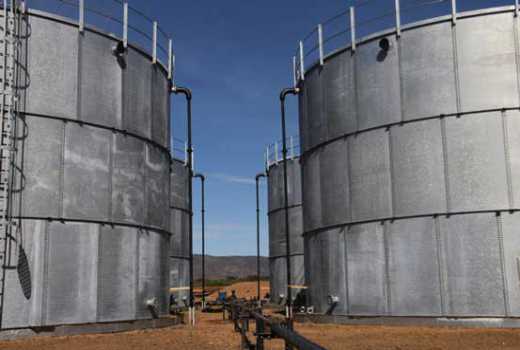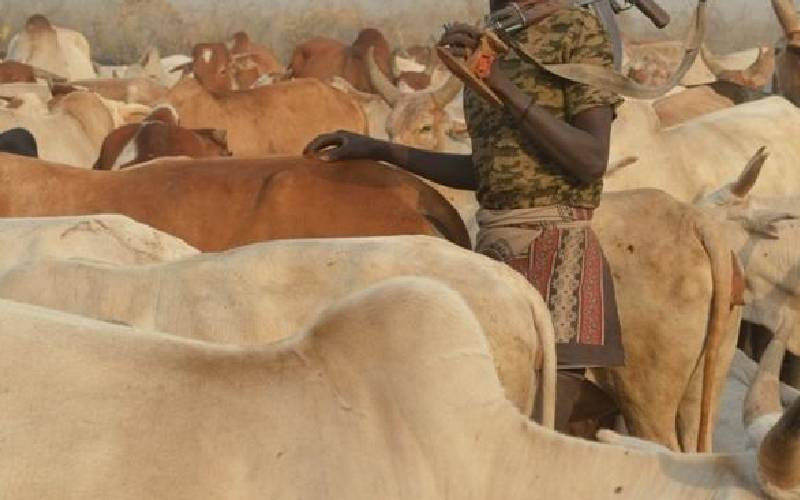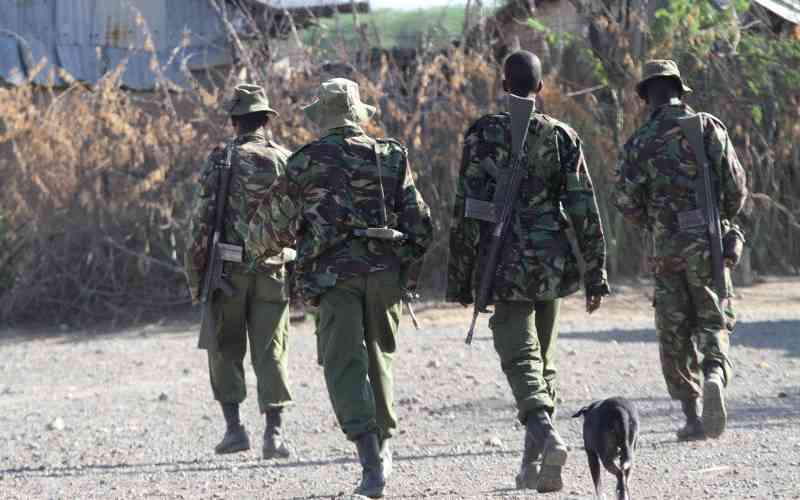
Nairobi, Kenya: Questions are now emerging on the total oil that Kenya can recover from its oil fields in Turkana County.
Insider information obtained by the Financial Standard indicates the true volume of recoverable crude oil could be a third of what Tullow Oil has in the past reported.
According to reports by Tullow, the country’s discoveries at the Lokcihar Basin stands at 750 million barrels.
However, industry reviews put the true recoverable oil which determines what can be extracted for commercial use at 250 million barrels.
This lower amount is largely informed by a silent rule in the oil exploration world which assumes that what can be recovered is usually between 20 and 30 per cent of the discovered amount.
In this case, the 250 million barrels would represent 30 per cent of the 750 million barrels discovered in the Turkana oil fields.
Tullow, however, insists that the 750 million barrels of oil it had announced are recoverable and not total discovered. It instead sprung up with a new figure of four billion barrels that had not been made public before since making oil discoveries in 2012.
The Ministry of Energy and Petroleum is also in the dark about the amount of recoverable oil in Turkana area and says it is in plans to independently audit the wells to ascertain the reserves reported by Tullow Oil.
At 250 million barrels of oil, this is hardly enough to sustain crude pricing that now ranges between a low of $55 (Sh5,600) and $66 (Sh6,720).
Though Tullow said the country could get a return on investments at current prices, with the cost of extracting and transporting the oil being at between $25-30 per barrel.
If the country was to go ahead to develop this commercially, it would at best last a few years and might not be enough to cover the exploration and development costs.
As a result, do we call off work, or do we allow for more survey and discoveries before claiming the elite title of being an oil producer?
If Tullow Oil and its joint venture partners in Lokichar project, for instance, produced 100,000 barrels a day, as was the case in Tullow operated Jubilee project in Ghana in its early years, the 250 million barrels of oil would only last for about seven years.
Uganda, which discovered oil in the western parts of the country about a decade ago, has discoveries of 6.5 billion barrels of oil, out of which respectable 1.7 billion barrels are recoverable.
Stay informed. Subscribe to our newsletter
The problem of the doubtful reserves is compounded by the scaling down of operations by Tullow Oil, the lead firm in the Turkana oil project.
The firm has reduced its employees by over 50 per cent, which could signal a probable planned sale of its stake in the project or proof that the amount of oil found in Turkana might not be worth the trouble.
Another signal of changed fortune at the Turkana oil field is the withdrawal of the only drilling rig from the Lokichar.
This follows the reported decline by Tullow JV partners, Africa Oil and Maersk (whose stake has since been taken up by Total), to approve funding for 2018 drilling as the results were not promising.
Rig counts are the measure of the number of active drillings for oil and gas. An increase in rig count is an important barometer of oil and gas producers’ confidence in drilling activity.
The Ministry of Energy and Petroleum (which have since been divided into Energy and Petroleum as separate ministries) while insisting that Kenya’s finds are commercially viable said it is in plans to audit the oil reserves in the Lokichar oil basin.
Principal Secretary for Petroleum Andrew Kamau said the ministry is currently in the process of recruiting a company that will audit the reserves.
The firm is expected to give an independent account of whether the Lokichar blocks have the highly publicised 750 million barrels of recoverable oil as reported by Tullow Oil.
The Ministry on November 30, last year invited firms to bid for the job of auditing reserves in Blocks 10BB and 13T. “We are in the process of getting an independent firm to go and audit the reserves,” said Kamau
“Unless you have your own independent person, it is difficult to tell that these are the reserves that we have and that is why we are hiring an independent auditor to verify the stocks.”
PS Kamau, however, defends the numbers that Tullow has published.
He notes that the field of oil exploration is dynamic and results can be interpreted differently.
The resources can differ depending on the area of focus as well as how much exploration and appraisal has been undertaken in the area in question.
He added that the fields in Lokichar have not been explored fully and he is bullish that further exploration will return even a bigger number.
“They could be talking about the recoverable resource in a certain area of interest, which might not be the whole block. Reserves are of different types and it depends on what you are talking about. And you can point a number to any one of those (types of reserves) that you want,” he said.
The PS observed that the Lokichar region has both proven and probable reserves. “We have not explored all the fields in those blocks,” he said.
Tullow Oil maintained that its previous reports of the Lokichar basin having a recoverable resource of 750 million barrels are accurate, adding there has not been any change.
If anything, the firm said it is ready to revise upwards the estimates, following an extensive well drilling and appraisal exercise it has been undertaking over the last two years.
While the firm did not say how much it would revise, the resources in Lokichar citing London Stock Exchange rules that demands that only verified data can be disclosed.
The firm has in the past said the area has the potential for one billion barrels of oil.
“The claim (of lower than reported recoverable oil) is not correct. The pmean (recoverable oil) resource guidance of 750 million barrels remains consistent with our latest analysis… we will provide a more detailed update on the range of resources and development plans in February,” said Tullow Country Manager Martin Mbogo. “If the resources had changed to the degree that is being suggested, we would be bound by stock exchange rules to update this, which is not the case.”
Mr Mbogo further noted: “When we state that we have pmean resources of 750 million barrels, these are discovered oil resources that we expect to recover.”
According to Mbogo, the total oil reserves in the Lokichar Basin could be as high as four billion barrels of which 750 million barrels are recoverable.
The four billion barrels as the total reserves is the new information that Tullow Oil has not published in the past, and only volunteered the information after a back and forth with Financial Standard.
The clinging on the information is unlike in other Tullow Oil’s operations, where for instance in Uganda, the firm in the past said the total among of oil in place is 6.7 billion barrels, of which 1.5 billion barrels are recoverable.
“The oil in place for the basin, often referred to as the Stock Tank Oil Initially In Place (STOIIP), is up to four billion barrels,” said Mbogo. He added the firm would issue a comprehensive statement on the new reserves in its financial statement for 2017 that is scheduled for release in February.
“Following extensive appraisal activity over the last 24 months, our current focus is on reviewing all the data from the South Lokichar basin and we plan to give an update on the resources and plans for developing this exciting and high potential basin at our full year results statement in a month’s time (on February 7, 2018),” noted Mbogo.
“We cannot comment on specific volumes in advance of the forthcoming statement, however, the 2017 wells and testing activities continue to make us very confident of an oil development in Kenya.”
Industry experts noted the secretive nature of the oil industry, some attributing it huge investments and high risk as well as the need to keep away critical information from the competition.
“The industry is fairly secretive because of the commercial interests as well as the investments that are usually at stake. Because of this, the public might not get much information,” said Chrysanthus Gicheruh, a geologist.
 The Standard Group Plc is a
multi-media organization with investments in media platforms spanning newspaper
print operations, television, radio broadcasting, digital and online services. The
Standard Group is recognized as a leading multi-media house in Kenya with a key
influence in matters of national and international interest.
The Standard Group Plc is a
multi-media organization with investments in media platforms spanning newspaper
print operations, television, radio broadcasting, digital and online services. The
Standard Group is recognized as a leading multi-media house in Kenya with a key
influence in matters of national and international interest.
 The Standard Group Plc is a
multi-media organization with investments in media platforms spanning newspaper
print operations, television, radio broadcasting, digital and online services. The
Standard Group is recognized as a leading multi-media house in Kenya with a key
influence in matters of national and international interest.
The Standard Group Plc is a
multi-media organization with investments in media platforms spanning newspaper
print operations, television, radio broadcasting, digital and online services. The
Standard Group is recognized as a leading multi-media house in Kenya with a key
influence in matters of national and international interest.









